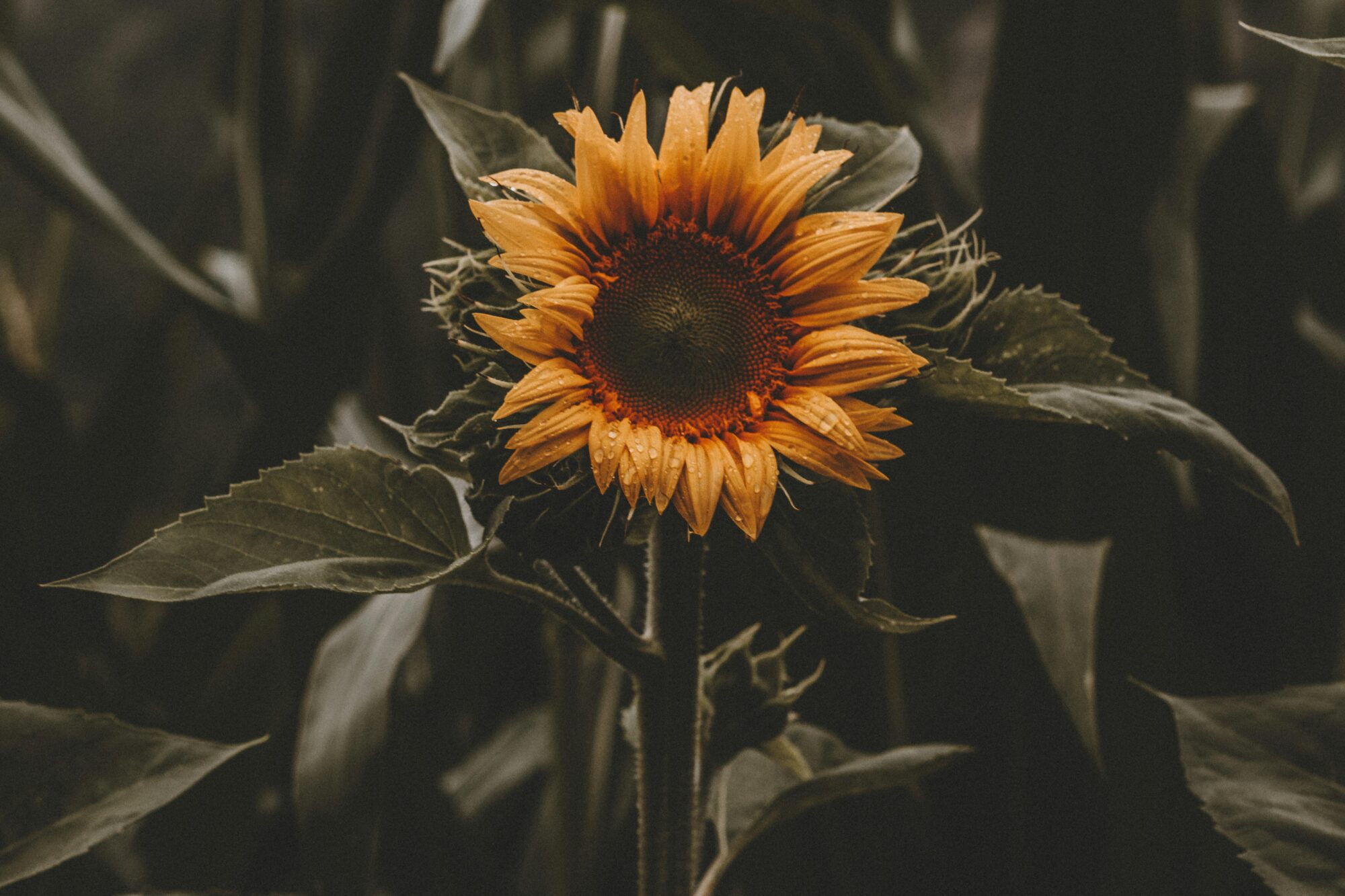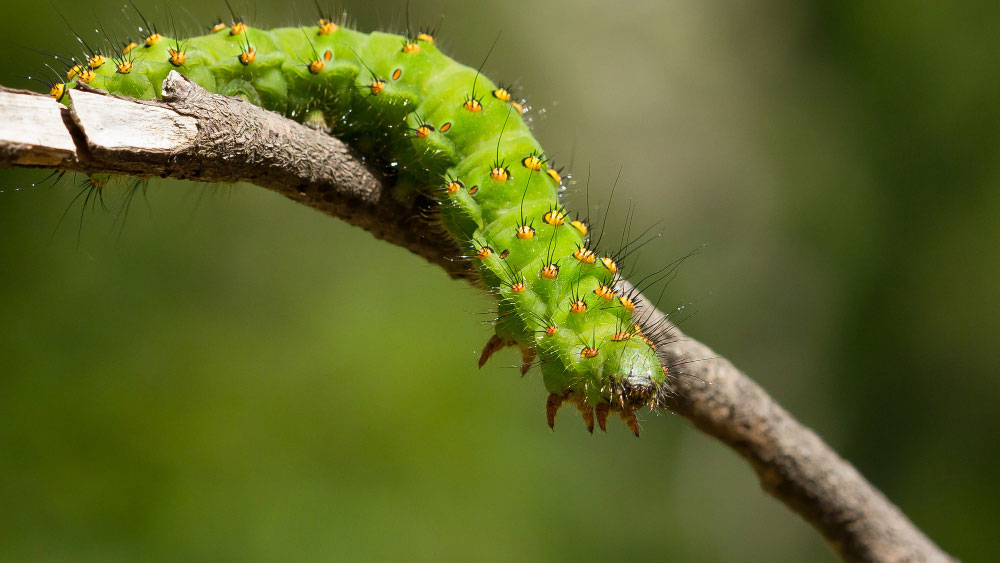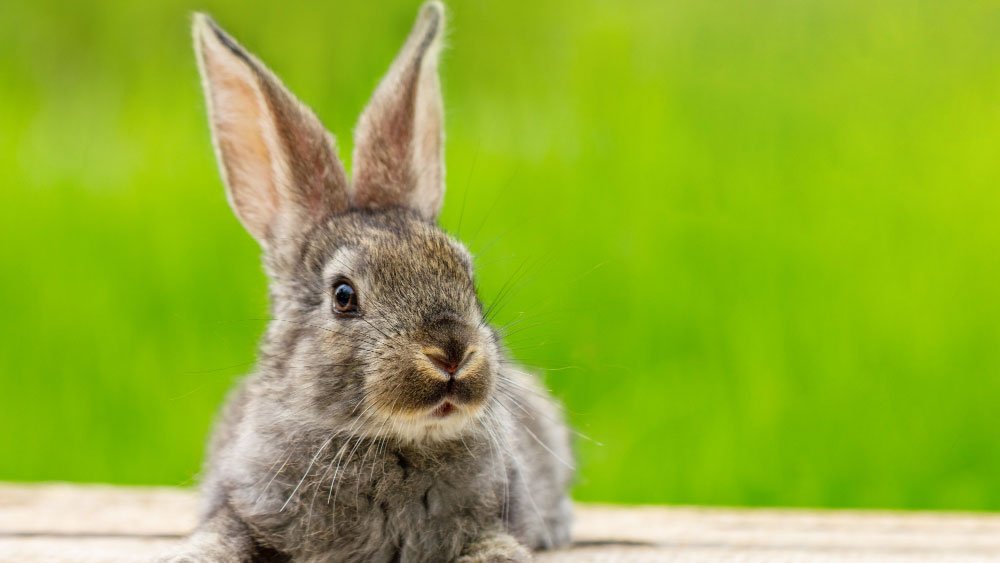What’s Eating My Sunflower Leaves?

Are you wondering what’s eating your sunflower leaves?
Sunflowers are not only lovely annual plants, but they also have a variety of uses. Sunflowers are a vital source of edible oils, attract birds to the garden, help detox contaminated soil, and their seeds are edible.
However, people are not the only ones that benefit from this beautiful flower. Many birds, animals, and insects also love feeding on this plant.
So, if it’s your first time growing sunflowers, you shouldn’t be surprised if the leaves and other parts of the plant are eaten.
If you notice such a thing, the best way to deal with the culprit is to find out what’s eating your sunflower leaves. This will help you deal with the problem quickly. When it comes to dealing with these pesky creatures, avoid using hazardous methods.
Not all insects are harmful, such as spiders that feed on the lace bugs and sunflower beetles. Some animals, birds, and insects may be feeding on your sunflower leaves.
1. Grasshoppers
Grasshoppers are one of the first culprits for eating sunflower leaves. These creatures love feeding on the sunflower’s foliage. Grasshoppers eat leaves like lace bugs that suck the sap from the leaves.
This may be fine if there are a few grasshoppers in your garden. But your plant may be in danger if they are in large numbers. They may feed on the leaves, stems, and even flowers.
The best way to eliminate grasshoppers in your garden and from your sunflower plant is by getting rid of weeds, applying garlic spray, raising chickens, or dusting leaves with flour.
Alternatively, you can introduce grasshopper predators, such as praying mantis or toads.
2. Beetle

Other common insects that love feeding on sunflower leaves are beetles. There are different types of beetles, and most of them love feeding on young foliage. If you detect these insects, you should deal with them immediately.
If the beetle attacks a mature sunflower, there will be no considerable damage. But if the sunflower is small, the insect may have a severe effect on the sunflower’s growth.
Most types of beetles, such as the Mexican bean and Colorado beetle, can be eliminated by handpicking them from the plant.
Other methods of eliminating these pesky insects include spraying them with neem oil, attracting beetle predators, or spraying them with insecticides.
3. Moths
Aside from beetles, clearwing moths are other borers that could be eating your sunflower leaves. These feed on the leaves and flowers of the sunflower. In no time, they may weaken the plant and even kill it.
Moths are the worst as they feed and lay eggs on the sunflower. When the eggs hatch and turn into larvae, they feed on the flower and leaves, leaving behind a weak plant.
If moths have become a burden in your garden and are destroying your sunflower plant, you can eliminate them in several ways.
The first is by introducing predators such as bats in your garden. Secondly, get rid of their larvae early before they grow into adulthood.
Also, you can use insecticides to eliminate them from your garden if there’s a need to do so.
4. Cutworms
Cutworms are also a problem for sunflowers because they eat sunflower leaves. However, these are not as troublesome as the insects that we’ve looked at above. But this doesn’t mean that they are not harmful, as they can be when they are in large numbers.
Cutworms are easy to detect as they usually leave behind holes in the sunflower leaves. Dealing with cutworms is easy as they usually feed at night and burrow into the soil during the day.
These creatures usually are fat with grey or dull brown segmented larvae, while adult cutworms are generally brown or dark grey.
Also, these worms are expected in May and June. Cutworms can be eliminated by handpicking them at night when they get out to feed. Remove the debris and weeds that might shelter and feed the larvae cutworms.
Last but not least, you can delay planting by a few weeks.
5. Caterpillar

Caterpillars destroy not only your sunflower plant but other plants in the garden. Caterpillars are the larvae of butterflies and moths. There are various types of caterpillars, which makes it quite challenging to get rid of them in one way.
For instance, some caterpillars can be touched while others can’t. The best way to eliminate caterpillars is to find out which type of caterpillar you’re dealing with.
Note that most caterpillars appear in the fall. The best way to handle most caterpillars is by planting early.
A healthy garden grows quickly and strongly. Another way is by handpicking them. Since some caterpillars are dangerous, you should wear garden gloves when removing them from your sunflower plant.
Also, you can attract predators such as birds on your landscape.
6. Aphids
Aphids are a common problem in most gardens. These pesky insects are usually black or light green. They can also be found in grey, brown, yellow, and white colors.
Also known as plant lice or greenflies, aphids can be found on the underside of leaves, stem bases, and flower buds. These insects will suck and eat the leaves slowly by slowly.
They love biting the edge of the leaves. Eliminating these insects is easy and fast because you can remove them using your hand.
This method is quick and not harmful to other good insects on your sunflower. Secondly, you can introduce predators to your gardens, such as insect larvae, birds, and other insects.
Also, you can use insecticides, especially if they are in large numbers. Aphids multiply quickly, so you’ll have to deal with them as soon as possible.
7. Birds
Even though birds can be a plus in your garden, some may hurt your sunflower plant. Birds are expected after the flower has developed and the sunflower seed are almost ready for harvesting. However, some birds feed on the sunflower leaves, such as the lesser goldfinch.
Unlike insects, birds cannot be picked, and more thorough methods may have to be applied. The best method for protecting your sunflower is by building a barrier. This will prevent birds from accessing your plants.
You can also use bird scare tactics, such as loud noises or baits that resemble predators.
8. Deer
If you have tall sunflowers in your outdoor garden, there is a chance that animals like deer can also eat sunflower leaves. This is easy to notice as an animal bite differs from an insect bite. However, catching the deer can be pretty challenging as they are fast and may appear when you’re fast asleep.
However, you can check out their footprints and feces or set up cameras to capture them.
Dealing with a deer may be challenging as they are very persistent once they get used to feeding in an area. You can deal with them by building a barrier around your garden.
Also, you can plant deer resistance, spray deer repellents, or regulate hunting.
9. Snugs And Snails
Snails and slugs can also feed on your sunflower foliage. These creatures usually come out at night to make their destruction. Worst of all, snails can attack your sunflower indoors in pots or outdoors in the garden. They usually eat leaves and love tender foliage.
So, if your sunflower plant is young, you should be able to protect them from these irritating creatures.
When it comes to removing snails and slugs from your garden, there are many ways that you can adopt.
These include removing by hand, attracting predators like birds in your garden, rearing chickens, sprinkling coffee grounds on the garden, spraying the sunflower with homemade snail repellant, or even sprinkling broken eggshells.
10. Leafcutter Bees
The Leafcutter bee is a valuable pollinator for gardeners. Unlike other insects on this list, the leafcutter bees are not very destructive as they only cut a piece of sunflower leaf.
These bees are easily detected by leaving behind half-moon-shaped cuts on your leaves. They use cut leaves to create nest cells for their young ones. What’s more, these bees are not very aggressive, like other honey bees.
Also, they do not sting; their sting is not as painful as a honey bee. Even though these bees destroy part of your sunflower leaves, they are not dangerous to plants like caterpillars or moths.
As a result, you should not use insecticides to remove them as they are good pollinators. The best way to eliminate them is by planting bee-repelling plants like mint, eucalyptus, and citronella.
Also, you can use a vinegar spray solution and mothballs. Overall, leafcutter bees are not harmful to your plants and should be left to thrive.
After all, these bees have many enemies; hence, they cannot multiply quickly.
11. Rabbits

If you live in an area with wild rabbits roaming around, they might find your sunflowers interesting and eat their leaves. To keep them away, you can create chili powder or buy some from the market, then sprinkle the chili powder around your sunflower plants. Alternatively, you can also DIY a pepper solution and spray it around the plants. Doing so would deter any rabbits wanting to eat your sunflower leaves.
12. Finches
Like keeping all other birds away, you can hang reflective objects near your sunflower plants to keep finches away. Or, you can set up other plants that appeal to a finch to divert its attention away from your sunflowers.
How To Prevent Pests From Eating Your Sunflower Leaves?
Ensure that you keep away weeds around your sunflower plants to prevent any pests, particularly insects, from gaining easy access to the sunflowers. You can also explore alternative solutions, such as making DIY insecticides and spraying them around the plants.
Summary
Now that you know what may be eating your sunflower leaves, you can deal with it immediately. But first, you must find out whether it is a goldfinch, caterpillar, cutworm, beetle, or snug. Use the most appropriate method to eliminate the pesky creature destroying your sunflower leaves.
We wish you all the best as you try eliminating pests from your sunflower plant.